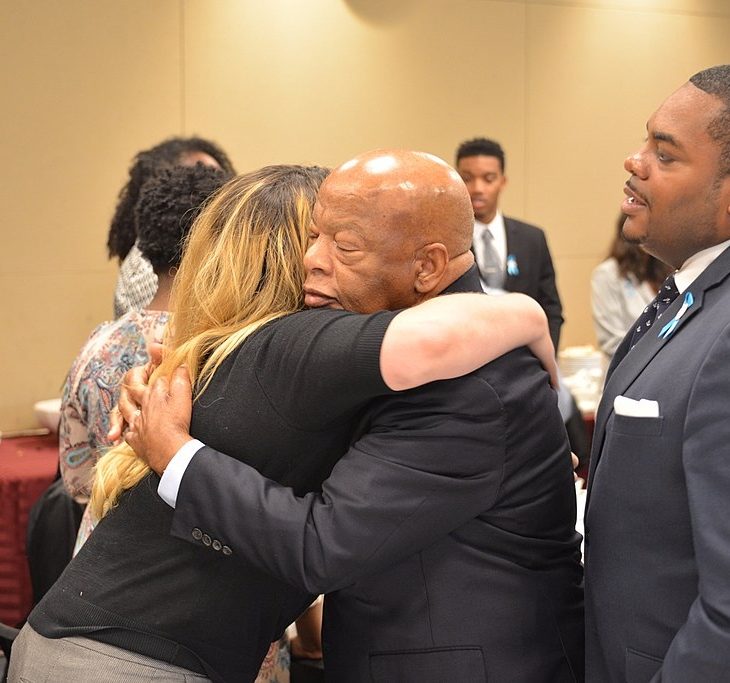What We Can Learn from John Lewis
July 27, 2020

In one of the most striking scenes from the film John Lewis: Good Trouble, a journalist asks the civil rights icon, at that point comfortably in his middle age, what it felt like to go from a protestor in the rural south to a bureaucrat in the nation’s capital. The answer from Congressman Lewis was wise and measured: when “the drama in the streets is over” the site where the work is done shifts.
In his case, the work shifted to the world of government, and as he launched his career in that new space, he realized that it is one thing to fight from the outside to overturn a system, and quite another to fight from the inside to improve a system.
Good Trouble depicts the many ways that John Lewis advanced civil rights work, from his childhood preaching to chickens in rural Alabama to his work with SNCC in the streets of Selma to his role in the Carter administration and then as the Representative for the 5th District of Georgia. He went from organizing demonstrations to organizing Congressional hearings; from registering his grievances against racism through sit-ins at lunch counters to being the seat of power in rooms hearing out the grievances of others.
There is, of course, a clear through-line to the work of John Lewis. Over the course of it all – from the beating he took in Selma to the achievement of the Voting Rights Act to the elections of Barack Obama and then Donald Trump – he claims to have never despaired. He always believed that America could become a beloved community. He was proud of the progress that had been made, that indeed he had helped make. Even as a Congressperson he led protests, but politely quieted those in his camp who shouted ‘shame’ at the other side. He believed to the end that at least some of those people were potential allies who had not yet been convinced, temporary opponents who might be won over, not permanent enemies who had to be destroyed. He had seen too much change in his own life to think differently.
It was faith that fueled and guided him. As a boy, he would carry his Bible to school with him. As a college student, he studied the teachings of the great world religions, especially as they related to nonviolence. As a Civil Rights leader and a Congressman, he was adept at bringing people from different faiths together for a common cause. He was an interfaith leader in every sense of the word.
While the spirit and values remain constant, and some of the skills (certainly speaking and organizing) transfer, there is a marked difference between being a protestor and being a legislator. The first seeks primarily to expose structures of injustice, the second to be part of building a better order. The first works toward a more fervent revolution, the second focuses on building a more just society.
The catastrophe of the Trump years has been a time of high drama in the streets, from the massive Women’s Marches and the #MeToo movement to the revolt against the Muslim ban to the outpouring of tears and rage after the murder of George Floyd, spearheaded by Black Lives Matter. Even as I write, federal forces and protestors are doing battle in the streets of Portland, Seattle, and Austin.
But revolutions do not go on forever. The drama in the streets always, one way or another, ends. At that point, the big question for those who have righteously raged against the unjust old order is whether they can build and run the institutions of a new and better order. Can they make the transition from protestors against a system to a builder of a better one? It is not an easy change to make. Indeed, it is harder to organize a fair trial than it is to fire up a crowd, harder to run a successful school than to tell other people what they’re doing wrong with the existing school system, harder to protect public safety than it is to chant ‘defund the police’. But every decent society needs fair trials, good schools, and public safety, and that’s just the beginning of the list of institutions and structures that need to be built and effectively run. Who will be the builders of that new order?
John Lewis was one of the heroes of the Civil Rights movement who knew when and how to protest, and when and how to build. It is an example worth studying and following.
Share
Related Articles
American Civic Life
Interfaith America Interview
Interfaith America Interview



